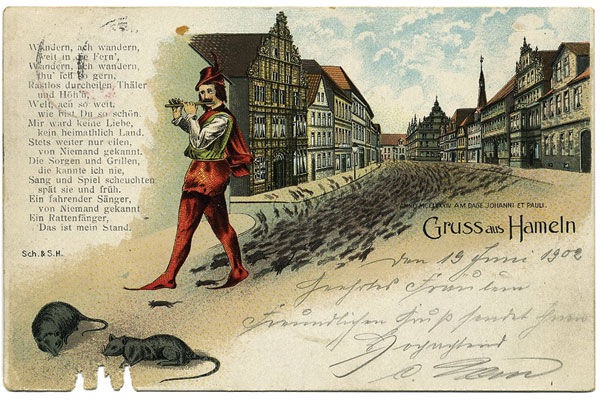
On June 26, 1284, more than 100 children in the German town of Hamelin were adbucted by a strange man playing the flute. The man, and the children, vanished, never to be seen again. To this day, dancing and music it outlawed on Bungelosenstrasse, the Hamelin street where the children were last seen. Is the story true? And if so, who the hell was this Piped Piper? Fortean Times dives into this lasting mediæval, macabre, and mysterious tale:
'The Lost Children of Hamelin'
...Folklore has assimilated the figure of the Pied Piper with that of a rat-catcher. The first surviving reference to rodents appears in the 16th-century Zimmern Chronicle (c.1559–65), followed by Weyer’s aforementioned Delusions of the Devil, both written almost three centuries after the tragedy.
If the rats were most likely a later addition rather than an original element of the Hamelin episode, they gave depth to the tale and resonated in the popular imagination thanks to a play of macabre symbolic associations. The image of a rat-infested mediæval town instantly brings to mind thoughts of the plague. Plagues and epidemics have had a continuous impact on the collective imagination, taking us back to the Ten Plagues of Egypt in Exodus: biblical plagues were a punishment from God. The Piper, able to defy the curse with the power of his music, is thus invested with supernatural abilities.
In mediæval representations, Death presented himself as a skeleton wearing a colourful pied attire, a jester who always laughs last (perhaps the reportedly widespread fear of clowns – see FT226:34–41 – might even derive from this image). The Pied Piper thus becomes the lord of the rats, the Black Death (known at the time as the Great Death or simply the Pestilence) personified, and the one responsible for taking the lives of the 130 children of Hamelin.


No comments:
Post a Comment